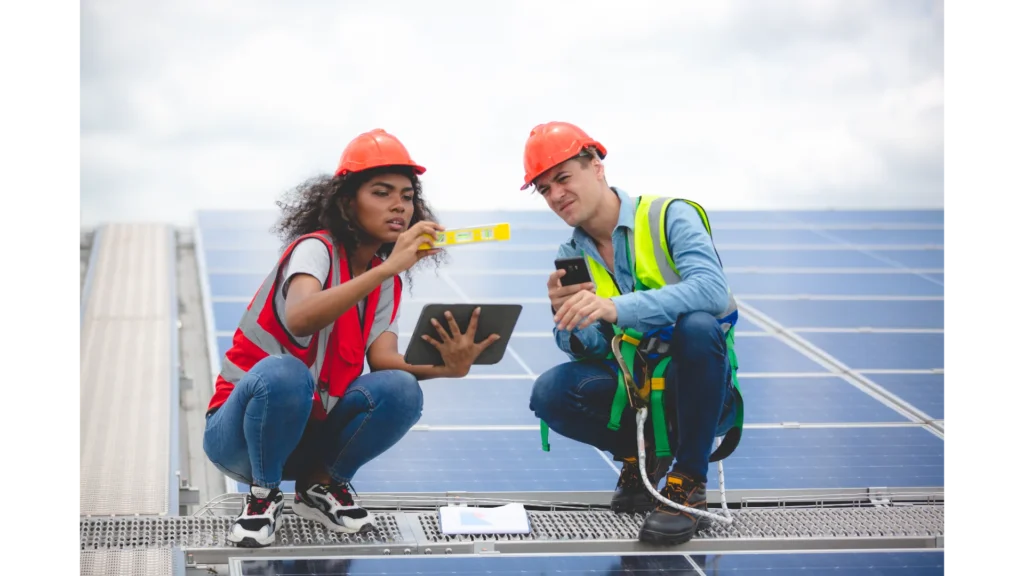
With the rising cost of electricity and a growing concern for the environment, many homeowners are turning to solar panels as an alternative energy source. However, before investing in solar panel installation, it is important to consider how much space you will need on your roof.
There are several factors to consider when determining the amount of space required for solar panels, including the type of panel you choose and the location of your home.
By understanding these factors and taking accurate measurements of your rooftop solar, you can maximize your available space for home solar and ensure that you are generating enough power with solar panels to meet your household’s needs.
In this article, we will explore these considerations in detail so that you can decide whether solar panels are right for your home.
Before implementing solar energy, several factors need to be considered regarding the installation process.
One of the primary considerations for a rooftop solar installation is the amount of available space on your roof. The size and orientation of your roof will determine how many home solar panels can be installed and how much electricity you can generate from your solar power system.
Another factor to consider is the angle of inclination of the solar panels. The optimal tilt angle for a solar panel varies depending on your location and latitude. Panels that are mounted flat or facing in another direction may not receive as much sunlight as those tilted at an optimal angle, which can affect their overall efficiency.
Finally, it’s important to consider any shading that may affect your solar panel’s performance. Trees, buildings, or other obstructions blocking direct sunlight can significantly reduce a panel’s output capacity. Thus it is essential to locate areas without shading when installing solar panels.
By considering these factors before installing solar panels on your roof, you can ensure maximum efficiency and return on investment for your renewable energy system. Remember that every home is unique; therefore, consult with a professional installer who will assess your situation and provide tailored recommendations for optimal performance.
The Section on Types of Solar Panels and Their Space Requirements provides insight into the various types of panels available and their corresponding spatial specifications for those interested in adopting solar energy.
The most common type of solar power system panel is the traditional silicon-based panel, which requires around 100 square feet of space per kilowatt (kW) installed. These solar modules are efficient and affordable, making them a popular choice for residential installations.
Another type of panel gaining popularity is thin-film solar cells. Thin-film panels require less space than traditional silicon-based ones, with approximately 75 square feet needed per kW installed. However, they are less efficient and tend to degrade faster than their counterparts. Additionally, thin-film panels often come at a higher cost compared to silicon-based ones.
Finally, concentrated photovoltaic (CPV) systems use lenses or mirrors to focus sunlight on small, highly efficient solar cells. CPV systems require the least space per kW installed at around 25-50 square feet but come at a significantly higher cost than other options. They also have specific requirements regarding placement due to their need for direct sunlight, which can limit options for installation sites.
Ultimately, deciding what type of solar panel to install will depend on various factors such as budget constraints, available roof space, and desired energy output.
Accurately measuring the dimensions of a roof is an important initial step toward determining whether it is suitable for solar panel installation and how many panels can be accommodated. This involves calculating the available space on the roof and its orientation to ensure maximum sunlight exposure.
Here are some key steps to follow when measuring your home’s roof for solar panel installation.
Determine your roof’s pitch for solar installation: The angle of your roof (also known as its pitch) will affect how much sunlight it receives throughout the day, making it an important factor for solar panel systems. With this functionality, aitch can be measured using a digital level or a smartphone app.
Measure the area: Once you have determined your pitch, measure the area of each section of your roof that could accommodate solar panels. This includes any obstructions such as vents, chimneys, or skylights.
Consider shading: Shade from nearby trees or buildings can significantly impact the effectiveness of solar panels on your home’s roofs, so it’s important to consider this factor when measuring your roof for installation.
By accurately measuring your roof’s dimensions and considering factors such as pitch and shading, you can better determine how much space you have available for solar panel installation and how many panels you can accommodate. It’s also important to consult a professional installer who can assess these measurements with other factors, such as local weather patterns and energy consumption levels, to recommend an optimal system design.
When optimizing solar energy production, making the most of available roof space is crucial, and several strategies can be employed to achieve this goal.
One effective way to maximize your roof’s space for solar panels is by installing them at an angle that captures the maximum sunlight. This can be achieved by tilting the panels towards the south if you live in the northern hemisphere or towards the north if you live in the southern hemisphere.
Another strategy is to use a tracker system that follows the sun’s movement throughout the day, ensuring that your panels always face it.
Another approach to maximizing your solar energy roof space is using higher-efficiency solar panels. These panels produce more energy per square foot than traditional ones, so you’ll need fewer to generate the same amount of electricity. Additionally, some companies offer flexible or thin-film solar panels that can be installed on curved surfaces or irregularly shaped roofs, further increasing your usage of available space.
Finally, consider utilizing every inch of your roof for solar panel installation. This includes any unused areas such as gables or dormers. Additionally, installing a smaller system first and then expanding it later as needed allows you to take advantage of all available space while also giving you time to evaluate how much power you need before investing in more expensive equipment.
By employing these strategies and being creative with your solar panel system installation plan, you can maximize your roof’s potential for generating clean and renewable energy from sunlight using solar panels.
Consulting with a professional solar panel installer can provide valuable insight into the spatial requirements to maximize solar energy production on your roof. These experts have vast knowledge and experience in designing and installing solar systems, which enables them to assess your roof’s potential for generating clean energy.
They can examine various factors, such as the orientation of your home, shading from nearby trees or buildings, and the pitch of your roof, to determine the ideal placement of solar panels.
During a consultation with a solar panel installer, they will also evaluate how much space you need on your roof to install solar panels. This assessment primarily depends on the size of your home and the amount of electricity you consume daily.
Typically, a 3 kW solar panel system requires about 300 square feet (28 square meters) of unobstructed south-facing space on your roof. However, the space requirement for solar panels may vary based on several factors, such as geographical location, weather patterns, and local regulations.
In conclusion, consulting with a professional solar panel installer is an excellent way to maximize every inch of available space on your roof for optimal energy production. Their expertise will help you design an efficient system that meets your budget and energy needs while utilizing all available resources.
By working closely with experts in solar panels and solar panel systems, homeowners can take control of their energy usage by installing a new roof with ample roof space. This will help create a cleaner world for future generations.
In conclusion, the amount of space required for solar panel installation depends on several factors. The type and size of solar panels, the household’s energy needs, and the roof’s orientation and angle are all crucial determinants.
It is essential to measure your roof accurately before installing solar panels to ensure that you have enough space to accommodate them. Maximizing your roof space for solar energy can be achieved through various methods, such as using tilt frames or considering a ground-mounted system if there is limited roof space.
Consulting with a professional installer can also help determine the space required for your specific needs. Ultimately, investing in solar energy is wise for homeowners who want to reduce their carbon footprint and save money on electricity bills in the long run.
The suitability of a roof for solar panel installation is determined by several factors, including the size and orientation of the roof, shading from trees or nearby buildings, and the roof’s condition.
A south-facing roof with little to no shading is ideal for solar panel installation, as it receives maximum sunlight throughout the day. The angle of the roof should also be considered, as a pitch between 30-40 degrees provides optimal energy production.
Additionally, it is important to ensure that your roof can support the weight of solar panels and any necessary equipment. Consulting with a professional installer can help you determine if your specific roof is suitable for solar panel installation.
Solar panels have become an increasingly popular choice for individuals looking to reduce their carbon footprint and save money on energy costs.
One common question that arises is whether or not solar panels can be installed on a flat roof.
The answer is yes, installing solar panels on a flat roof is possible, but it may require additional support structures to ensure the panels are tilted at the optimal angle for maximum efficiency.
The amount of space needed will depend on several factors, such as the size of the installed solar panel system and the roof’s orientation and shading.
It is recommended to consult with a professional installer to determine how much space is needed for your specific situation.
The maintenance requirements for solar panels are essential to ensuring their long-term efficiency and performance.
Regular cleaning is necessary to remove dirt, dust, and debris that may accumulate on the surface of the panels, which can reduce the amount of sunlight they receive.
Additionally, it is recommended to perform routine inspections to identify any damage or defects that may occur over time and require repair or replacement.
Professional maintenance services may sometimes be required for more complex issues.
By following these maintenance guidelines, solar panel owners can ensure optimal energy production and extend the lifespan of their investment.
Solar panels have a long lifespan ranging from 25 to 30 years or more, depending on various factors such as the quality of materials used in manufacturing, maintenance practices, and climatic conditions.
The efficiency of solar panels degrades over time due to natural wear and tear, which is why it’s crucial to factor in this aspect when considering their usage.
As the technology behind solar panels continues to advance, newer models are being developed that can last longer and perform better than previous versions.
It’s important to note that while replacing solar panels may be necessary at some point during their lifespan, investing in high-quality ones and maintaining them properly can significantly extend their life expectancy.
The installation of solar panels can have a positive impact on the resale value of a home. Studies have shown that homes with solar panels sell for more than those without and also tend to sell faster.
However, the exact amount of added value varies depending on factors such as location, size of the solar system, and local incentives.
While some potential home buyers may be hesitant about purchasing a home with an existing solar system due to concerns about maintenance or potential damage to the roof during installation, these concerns can often be addressed by providing information about warranty coverage and proper installation techniques.
Overall, the decision to install solar panels should be based primarily on personal energy goals and financial considerations rather than solely on potential resale value.

How Long To Install A Residential Solar Panel System? Installing a residential solar panel system is a significant investment that can provide homeowners with substantial
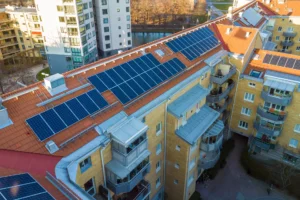
Can I Install Solar Panels On A Rental Property? As more individuals and businesses seek to reduce their carbon footprint, solar energy has become an
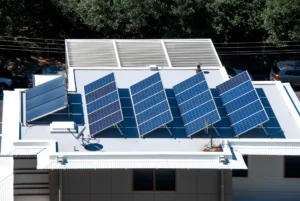
Can I Install Solar Panels On A Flat Roof? Solar panels are a popular and sustainable energy source many homeowners install on their property. However,
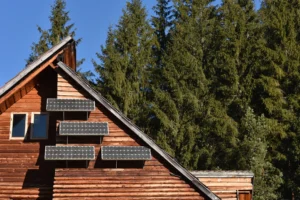
What Is The Difference Between On-Grid And Off-Grid Solar Systems? Solar power is becoming increasingly popular for individuals and businesses looking to reduce their carbon
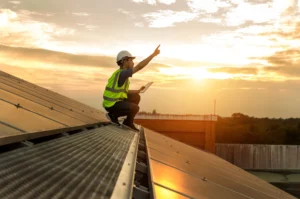
What Is The Best Angle/Direction To Install Solar Panels On My Home? The use of solar panels as an alternative source of energy has become
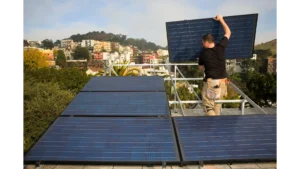
Best Mounting Options for Solar Panels: A Comprehensive Guide Solar energy is a renewable and sustainable source of power that has been gaining popularity in